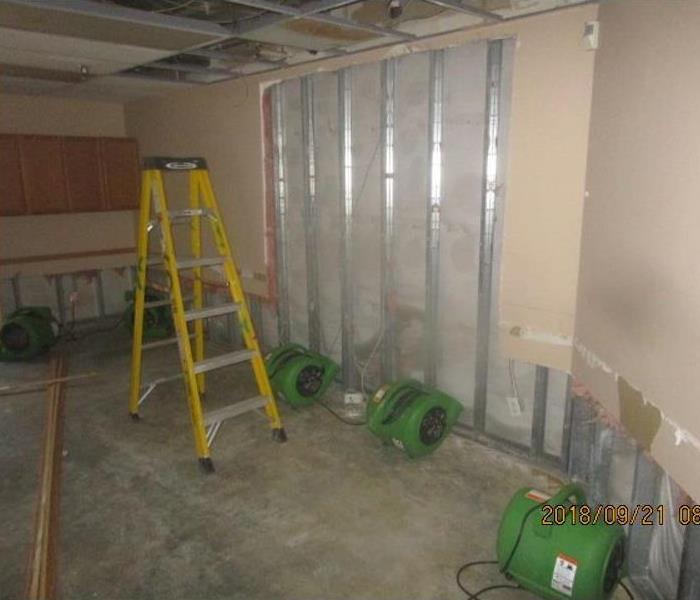The Flood Cut: Cutting Your Way Toward Restoration
11/21/2018 (Permalink)
Restoration Process
Flooding in your home is an emotional roller coaster and one that doesn’t end when the water recedes. The restoration process begins with property removal and the dreaded flood cut, which can leave many homeowners feeling like the restoration process is moving backward instead of forward.
1. What Is a Flood Cut?
A flood cut is a process of exposing wall studs to allow your home structure to dry without the worry of spreading mold and mildew. In order to reveal the studs, a cut must be made above the flood damage, about 12-18 inches, accounting for moisture absorption in the framing and insulation.
2. When Is It Necessary?
Flooding does not always consist of clean water. When a flood is caused by sewage or other polluted water, a flood cut is necessary to avoid contamination. The cut allows crews to remove affected insulation, drywall, and even studs to ensure the health and safety of you and your family.
3. Can It Be Avoided?
If the floodwater is clean water, then it is possible to avoid cutting open your wall, but only if the affected wall does not have insulation. In this instance, crews can drill several small holes into the affected drywall and insert flexible air hoses which used to pump dry, warm air into the cavity, drying the studs and drywall.
4. Is It a DIY Project?
You can try to perform a flood cut on your own, but if the floodwater was composed of sewage water, then it may be a better idea to call emergency restoration services in the North Scottsdale,AZ, area. Sewage water is considered black water, and it presents many health risks to you and your family.
Flooding can cause a lot of damage structurally and personally, but a flood cut should not be looked at as furthering that damage. A cut is actually a step in the right direction, a step toward restoring order in your home, and while you may be able to perform this task on your own, be sure always to consider your safety first.






 24/7 Emergency Service
24/7 Emergency Service
